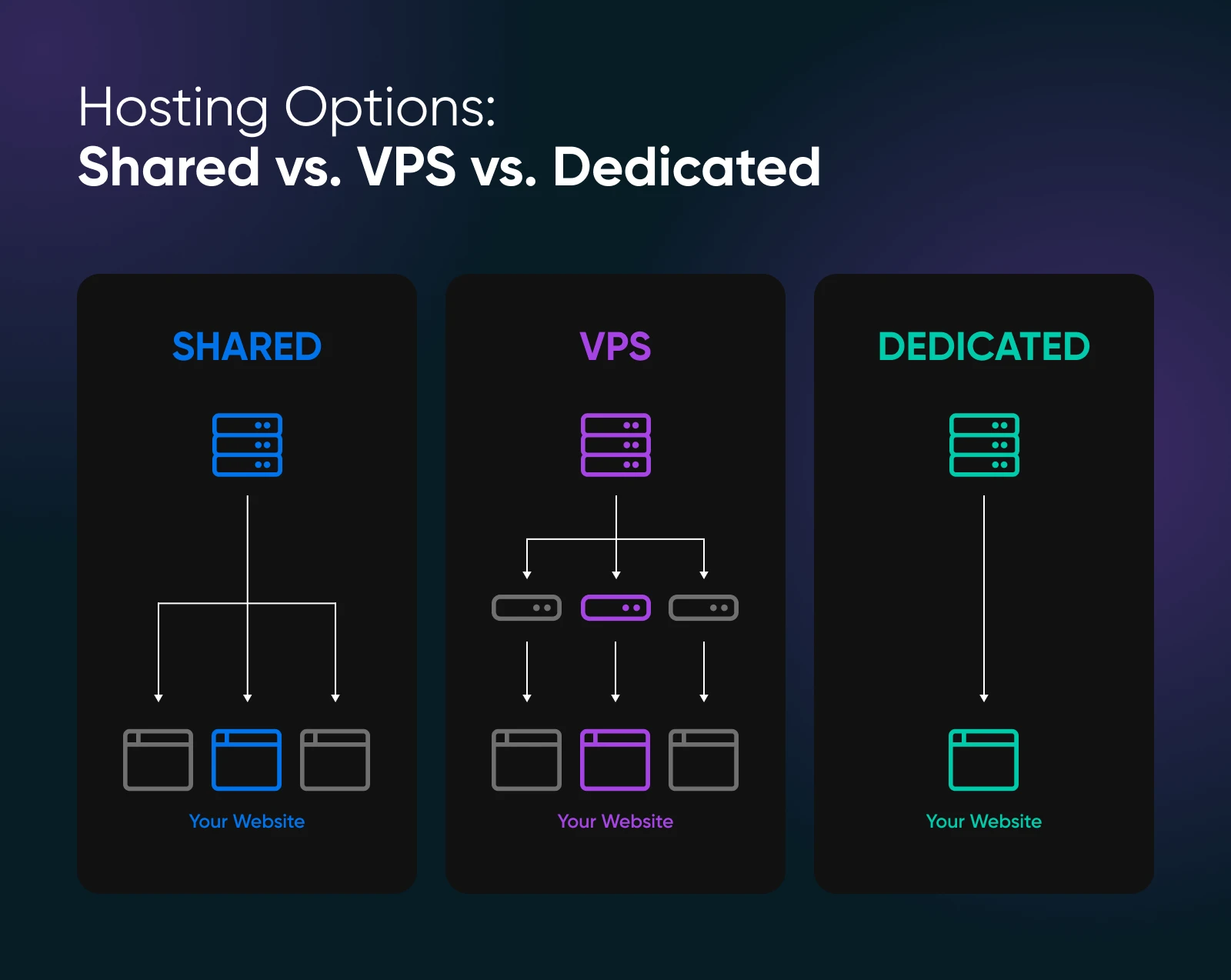VPS 1: What Is A VPS?
Posted on January 27, 2025 • 4 minutes • 642 words • Other languages: Español
This is the first part of my VPS blog series .
What Is A VPS?
A Virtual Private Server (VPS) is like having your own private slice of a larger server in a data center. Imagine renting an apartment in a big building: you have your own space, and you’re free to set it up however you like, but you share the building’s infrastructure (like elevators and hallways) with other tenants.
With a VPS, you get a dedicated number of resources like CPU, RAM, and storage that are reserved just for you.
- This gives you the flexibility to install software, configure your environment, and control how your server runs, all without worrying about what other people are doing on their servers.
- It’s not a physical machine sitting in your living room, it’s hosted by a provider and accessible online, but it feels like it’s yours.
The beauty of a VPS is that it offers a middle ground between shared hosting (where resources are shared with everyone and can get crowded) and a dedicated server (where you have an entire machine to yourself, but at a much higher cost). It’s a solid option for anyone who wants control, performance, and predictability without breaking the bank.
 Image from VPS vs. Dedicated Hosting (4 Key Differences)
Image from VPS vs. Dedicated Hosting (4 Key Differences)
Aren’t VPS A Thing Of The Past? Shouldn’t We Run Everything Serverless?
The term “serverless” is a bit misleading. There are still servers involved, but you never see or manage them.
- Instead of worrying about hardware, software updates, or scaling, developers focus purely on writing code.
- Cloud providers (like AWS, Google Cloud, or Microsoft Azure) handle the grunt work: spinning up servers when needed, patching security holes, balancing traffic, and even backing up data automatically.
In an era where “serverless computing” is the buzzword of choice, it’s tempting to think that Virtual Private Servers (VPS) are outdated relics of a simpler time. After all, why deal with servers at all when you can let cloud providers handle everything for you?
However, before you jump on the serverless bandwagon, it’s worth pausing to consider whether it’s truly the best choice for your app (and your wallet). Here’s why the VPS still has its place.

The Serverless Dream Can Quickly Become A Nightmare
Serverless computing promises unparalleled scalability, but that flexibility often comes with an unpredictable cost structure. A striking example of this came to light just a few months ago when cara.app , a small indie project, went viral. Built using serverless functions , the app’s sudden popularity led to a staggering $96,000 cloud bill for its creator.
This isn’t an isolated incident. Serverless pricing is heavily based on usage, and while that can seem cost-effective at first, a spike in demand can quickly send your costs into orbit.
With a VPS, you have a predictable monthly (or even yearly) cost, giving you full control over your infrastructure and budget. You may not scale as effortlessly as with serverless, but for most apps, that’s not even a requirement.
Your App Isn’t The Next Facebook (And That’s Okay)
The most common argument for serverless computing is the ability to scale infinitely to meet demand. While this is a great selling point for companies like Netflix or Uber, most apps won’t ever require that kind of infrastructure.
For most indie developers or small businesses, the occasional timeout during a surge in demand is a minor inconvenience compared to the risk of an unsustainable computing bill.
It’s better to take a step back, evaluate your growth, and adapt your infrastructure thoughtfully than to gamble on instant scalability you might never fully use.

